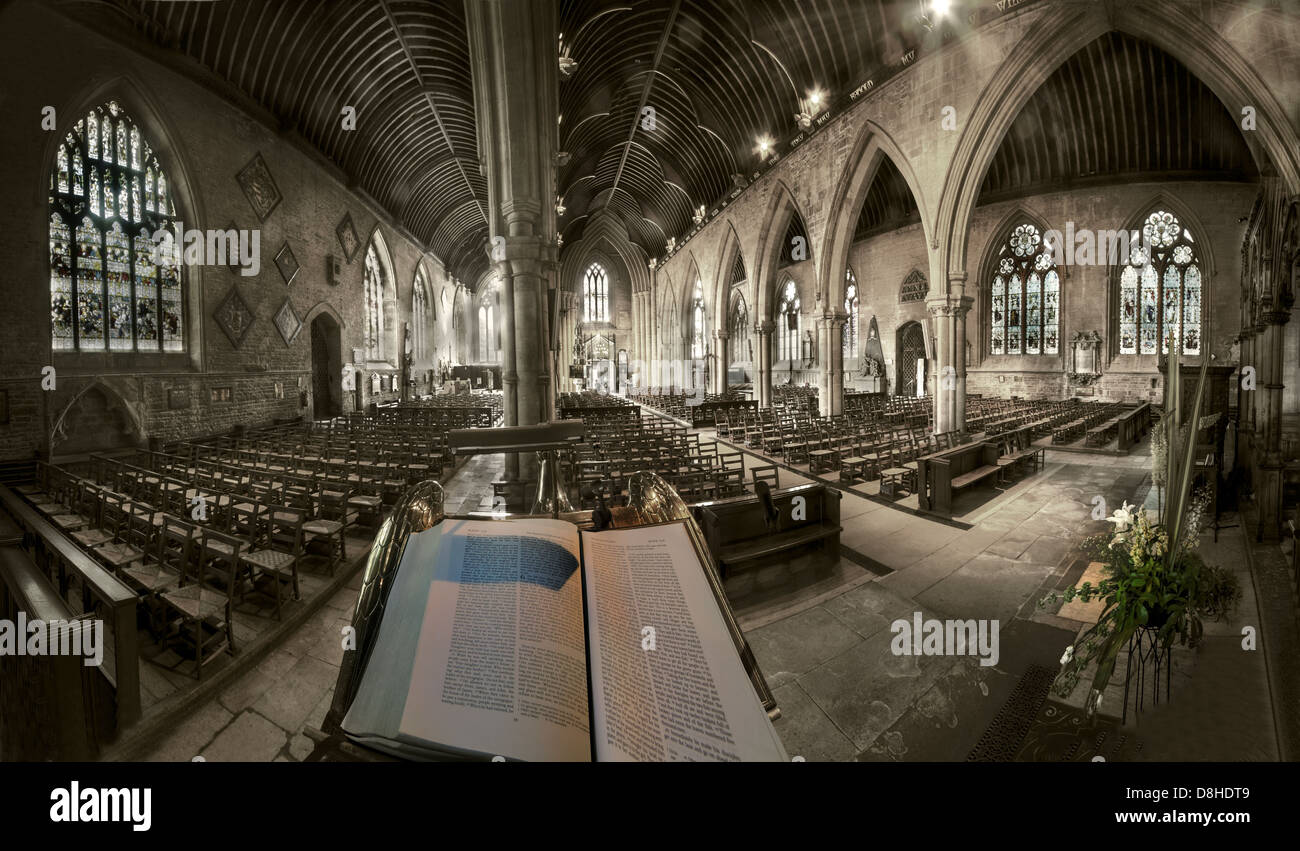Wide angle view From The Pulpit St Wulframs Church Grantham Lincs, England, UK NG31 6RR

Image details
Contributor:
Tony Smith / Alamy Stock PhotoImage ID:
D8HDT9File size:
62.1 MB (2.8 MB Compressed download)Releases:
Model - no | Property - noDo I need a release?Dimensions:
6084 x 3566 px | 51.5 x 30.2 cm | 20.3 x 11.9 inches | 300dpiDate taken:
21 June 2010Location:
St Wulframs Church, Grantham, Lincs, England, UK, NG31 6RRMore information:
St Wulfram's Church, Grantham, is a parish church in the Church of England in Grantham in Lincolnshire. The church has been a Grade I listed building, since 8 May 1950. In his book England's Thousand Best Churches, Simon Jenkins begins his description of St Wulfram's: "Here is the finest steeple in England" It is believed that a church stood on the site long before Norman times, but of the original Saxon church probably only a few stones, near the organ loft, remain. The church was totally altered by the Normans and the remains of their church may still be seen in the nave. From its foundation until the 18th century, it was the only church in the town, helping to explain its size in comparison with the churches at nearby Stamford. Although there were a number of religious cells in Grantham, including a Franciscan Friary, the Grey Friars, west of the market place, the wealth of the medieval wool trade was channelled into St Wulfram's Church. The north aisle arcades, except for the two west bays, date from before 1180. The original Norman church was ruined by fire when it was hit by lightning in 1222. The north aisle was rebuilt in about 1250. In 1280 the church expanded westwards over what was the market-place. The huge piers in the west end of the church have many 13th-century mason's marks, as do the spiral stairs to the belfry. In 1450 the north aisle was extended, and some time after 1496 St Katherine's Chapel was added by the Hall family. In 1550 the south aisle was lengthened and the Lady Chapel was built. The church was restored in 1866-67 by Sir George Gilbert Scott. Of interest are window frames from different periods, the use of ballflower ornament and the crypt chapel. The north porch was built to house relics of St Wulfram (possibly an arm bone), and the chained library occupies a room over the south porch which was once a priests' living room.